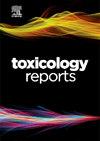在当代烟草研究中利用机器学习。
Q1 Environmental Science
引用次数: 0
摘要
机器学习(ML)有可能改变烟草研究,并解决烟草使用造成的紧急公共卫生危机。尽管有充分证据表明存在健康风险,但戒烟率仍然很低。ML技术通过分析大量数据集来揭示吸烟行为、遗传倾向和有效戒烟策略的模式,从而提供创新的解决方案。ML可以通过识别生物标志物和基因图谱,生成个性化预测和指导干预措施,预测肺癌和绝经后骨质疏松症等吸烟引起的非传染性疾病(SiNCDs)。它还改进了对婴儿烟草烟雾暴露的预测,区分二手烟和三手烟,并加强了对儿童的保护策略。数据驱动的个性化方法使用ML跟踪实时数据以获得个性化反馈,并提供及时的干预措施,不断改进戒烟策略。总的来说,机器学习提供了复杂的预测模型,增强了对复杂生物机制的理解,并实现了个性化干预,在与烟草流行的斗争中显示出巨大的潜力。本文章由计算机程序翻译,如有差异,请以英文原文为准。
Harnessing machine learning in contemporary tobacco research
Machine learning (ML) has the potential to transform tobacco research and address the urgent public health crisis posed by tobacco use. Despite the well-documented health risks, cessation rates remain low. ML techniques offer innovative solutions by analyzing vast datasets to uncover patterns in smoking behavior, genetic predispositions, and effective cessation strategies. ML can predict smoking-induced non-communicable diseases (SiNCDs) like lung cancer and postmenopausal osteoporosis by identifying biomarkers and genetic profiles, generating personalized predictions, and guiding interventions. It also improves prediction of infant tobacco smoke exposure, distinguishes secondhand and thirdhand smoke, and enhances protection strategies for children. Data-driven, personalized approaches using ML track real-time data for personalized feedback and offer timely interventions, continuously improving cessation strategies. Overall, ML provides sophisticated predictive models, enhances understanding of complex biological mechanisms, and enables personalized interventions, demonstrating significant potential in the fight against the tobacco epidemic.
求助全文
通过发布文献求助,成功后即可免费获取论文全文。
去求助
来源期刊

Toxicology Reports
Environmental Science-Health, Toxicology and Mutagenesis
CiteScore
7.60
自引率
0.00%
发文量
228
审稿时长
11 weeks
 求助内容:
求助内容: 应助结果提醒方式:
应助结果提醒方式:


